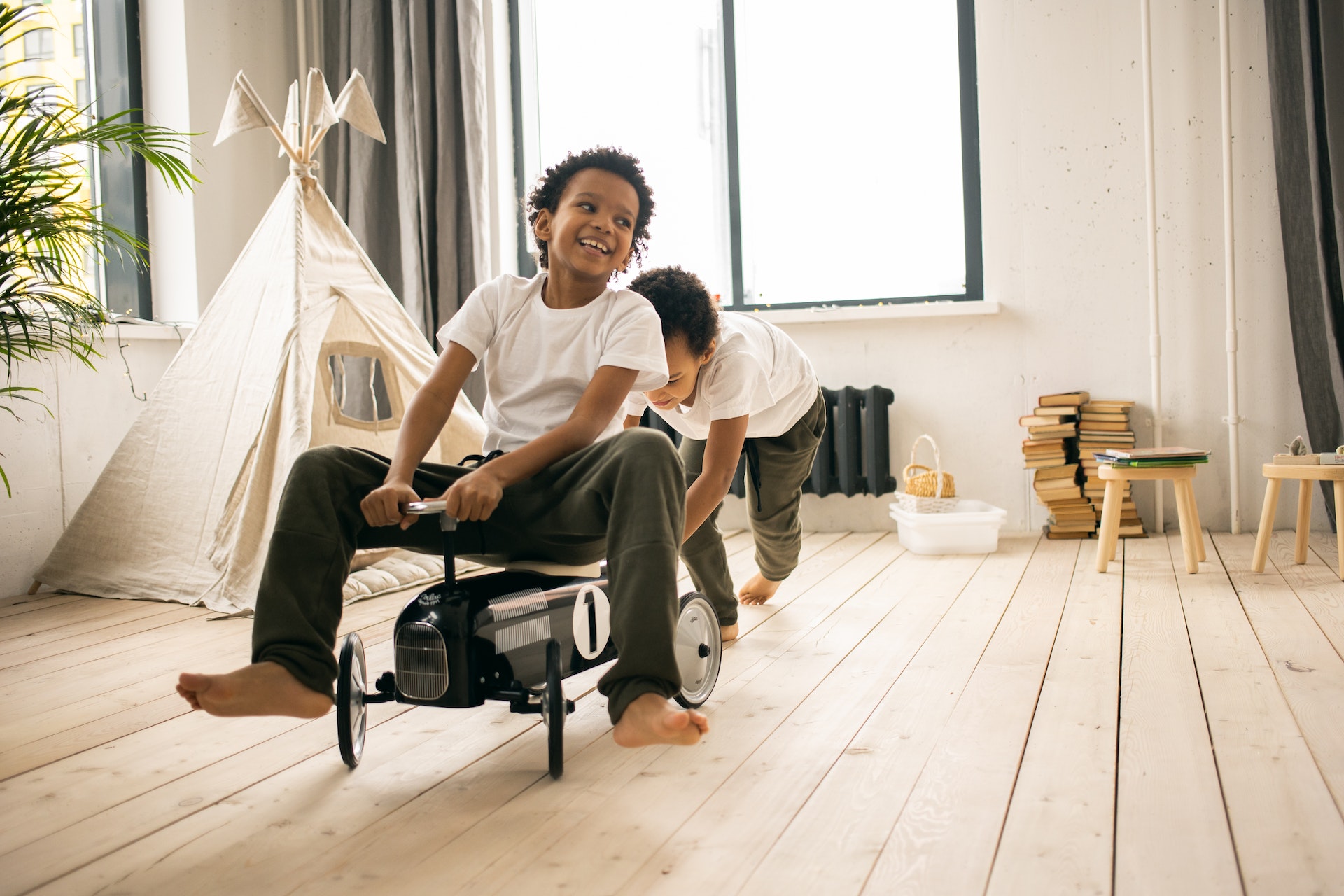Current and historical research identifies early childhood development as a significant and important part of life. From birth through age eight, children are building the foundations upon which all other learning can take place. This foundational learning happens through playing.

Engaging in fun and stimulating activities t make them memorable experiences. Encouraging children to fully immerse themselves in play gives them the opportunity to take ownership and make decisions about the natural learning occurring all around them Torbert and Schneider describe this as “the key that opens many doors.”
It is this understanding that makes play a necessary part of KneoWorld’s pedagogy. KneoWorld recognizes that children practice their newfound knowledge by playing and their playbridges the gap between the teaching and learning process.
Karl Groos believed that play was a natural activity demonstrated by the way animals “play fight.” It is almost like a rehearsal for the real event of having to battle to survive in the wild. Applied to humans, play helps children practice the skills they will use throughout their life.
This is supported by Cuellar, Tenreyo, and Castellon who observed that play has been seen across most areas of human history and recognized its importance.
Jean Piaget realized that learning can be defined by four stages of cognitive development. The sensory-motor stage occurs during the first two years of life when children learn to make sense of the world by using their own senses and interactions with objects. For example, they might explore a toy by putting it in their mouth.
Piaget’s pre-operational stage ( two years to seven), concentrates on language, speaking, and making meaning from texts. This is followed by the stage of concrete operations up until 11 years old when children’s mental abilities are challenged, discovering that some actions can be undone and that not everything is permanent.

Formal operations is the fourth stage that takes us into adulthood, which concentrates on strengthening our cognitive abilities in relation to logic and reasoning.
Piaget’s theories are centered around self-directed play as being the vehicle that drives these stages.
Vygotsky
Scaffolding was a key part of Vygotsky’s theory of play, building upon existing knowledge to grow. He considered that children needed to engage with others in ‘make-believe’ play to satisfy their individual instincts. They choose roles according to the game they are playing, such as “mums and dads” and use their imagination to include props; a broom becoming a horse, for example.
KneoWorld’s practices are innovative and look beyond the traditional methods of teaching reading, writing, mathematics, and emotional wellbeing. It is not about sitting in a classroom being a passive learner.

It is experiential and immersive which motivates children to continue to learn. This is supported by psycho-pedagogist Francesco Tonucci’s understanding that learning is more about playing and doing rather than studying and watching.
By implementing story-based learning, students can follow a narrative which allows for a range of thinking and prediction. It combines play and traditional storytelling with technology to tell educational stories and make learning easier.
Learn more about how play-based learning can bridge the learning gap and foster essential skills through engaging activities.


